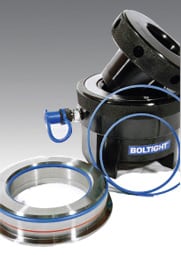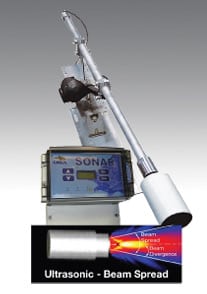Latest
-
Hydro
New workshop completes first overhaul
In early August, a special transport departed from Voith Siemens Hydro’s Heidenheim workshop bearing the company’s 300-ton, 300-MVA hydro motor-generator back to Schluchseewerk AG’s Wehr pumped-storage station in Germany’s Black Forest.
-
Solar
Scorching asphalt and solar power
Through asphalt, researchers are looking to develop a solar collector that could turn roads and parking lots into ubiquitous—and inexpensive—sources of electricity and hot water.
-
Business
POWER digest (October 2008)
News items of interest to power industry professionals. EDF and CGNPG create joint venture for Taishan nukes. Électricité de France (EDF) and the China Guangdong Nuclear Power Group (CGNPG) on Aug. 10 finalized a framework agreement made earlier, in November 2007, and formally created a joint venture company to build and operate two evolutionary pressurized […]
-
Coal
Computer simulation as a NOx reduction design tool
A utility evaluated various methods of obtaining a NOx reduction of at least 30%, as required by upcoming regulations for its boiler, which originally produced 0.54 lb of NOx/million Btu at 410 MW full load. Nalco Mobotec engineers performed a computational fluid dynamics (CFD) simulation of the boiler to first understand the boiler’s combustion process and then determine the most economical method to achieve the required NOx reduction.
-
News
Double duty flowmeter
As fluid passes through Exact Flow’s new DX-DL dual-rotor turbine flowmeter, the dual rotors become hydraulically coupled due to their counter-rotation. Not only does this allow the rotors to overcome the inertia and drag that typically affect single-rotor turbine flowmeters, it also extends the flow range to 500:1—five times the 100:1 flow range of a […]
-
News
Data interface flaps
Enclosure manufacturer Rittal Corp.’s latest products are designed to be incorporated into electrical systems to help ensure safety against arc flash hazards. Data interface flaps, shown here, provide rapid system access via integrated USB, SUB-D9 RJ 45, and NEMA 5-15 sockets when needed. The affected enclosure remains closed and is thereby protected from ambient influences […]
-
News
Flaw-finding family
GE Sensing & Inspection Technologies’ new family of ultrasonic flaw detectors incorporates conventional and phased array ultrasound technology in three upgradeable models: Phasor CV, Phasor 16/16 Weld, and Phasor XS. Each solution, designed for applications ranging from corrosion monitoring to defect detection and sizing, is compliant with all major inspection codes. The Phasor XS (shown […]
-
News
Tight seal, easy retraction
An advanced seal technology for hydraulic bolt tensioners recently developed by UK-based Boltight Ltd. takes advantage of the latest composite materials to eliminate oil leakage while allowing the tensioning piston to be retracted more easily after use. The new seals are a two-piece self-energizing design with an “O” ring made from a self-lubricating and durable […]
-
News
Sonar sensors
Hawk Measurement Systems has launched a new line of “fourth generation” sonar transducers designed for improved sensing of interface levels in clarifiers and thickeners. The new transducer designs include three to seven sonar crystals mounted in a single head. Each sonar array produces a concentrated sonar beam, providing more emitted power and collecting more returned […]
-
Commentary
McCain, Palin Ticket Doesn’t Really Dig Coal
Kennedy Maize
Desperate to score points in a crucial state where they are in the double-digit dumps, the Republican McCain-Palin presidential ticket rolled out their heartfelt support for “clean coal technologies” at a rally in Scranton, Pa., this week.








